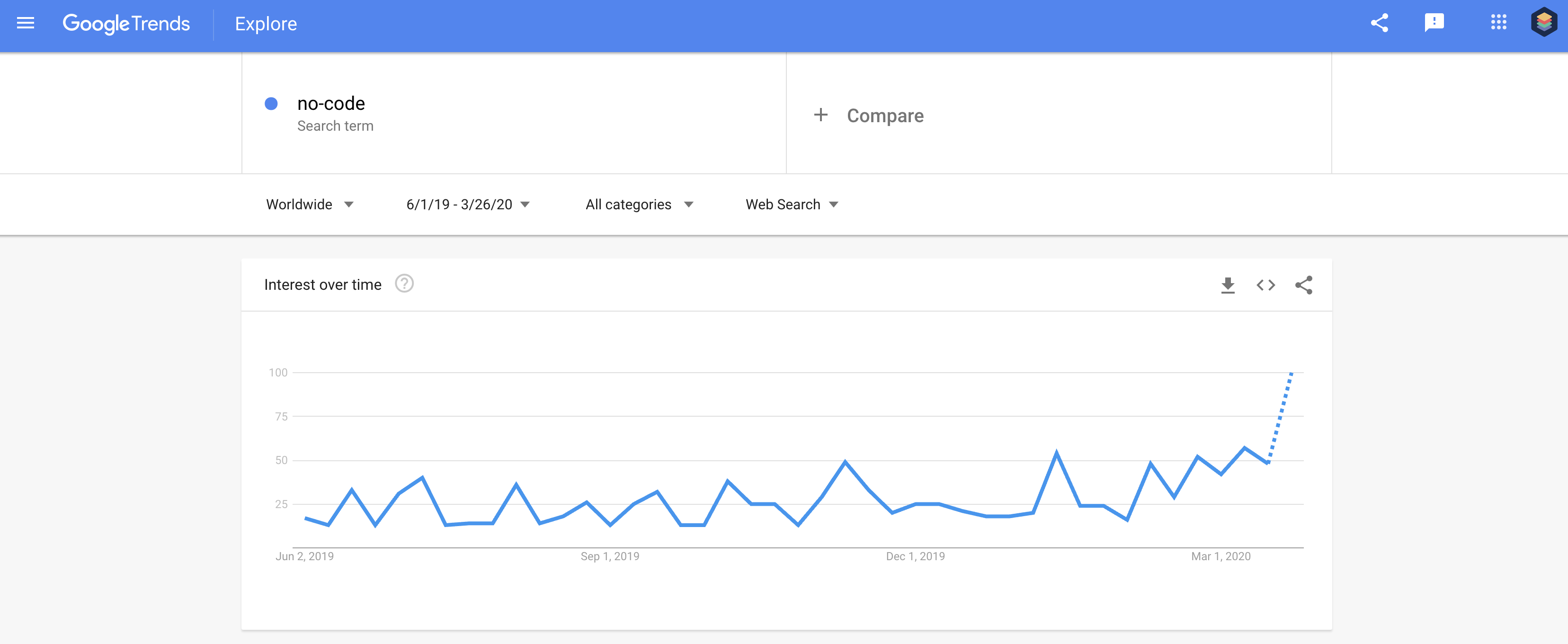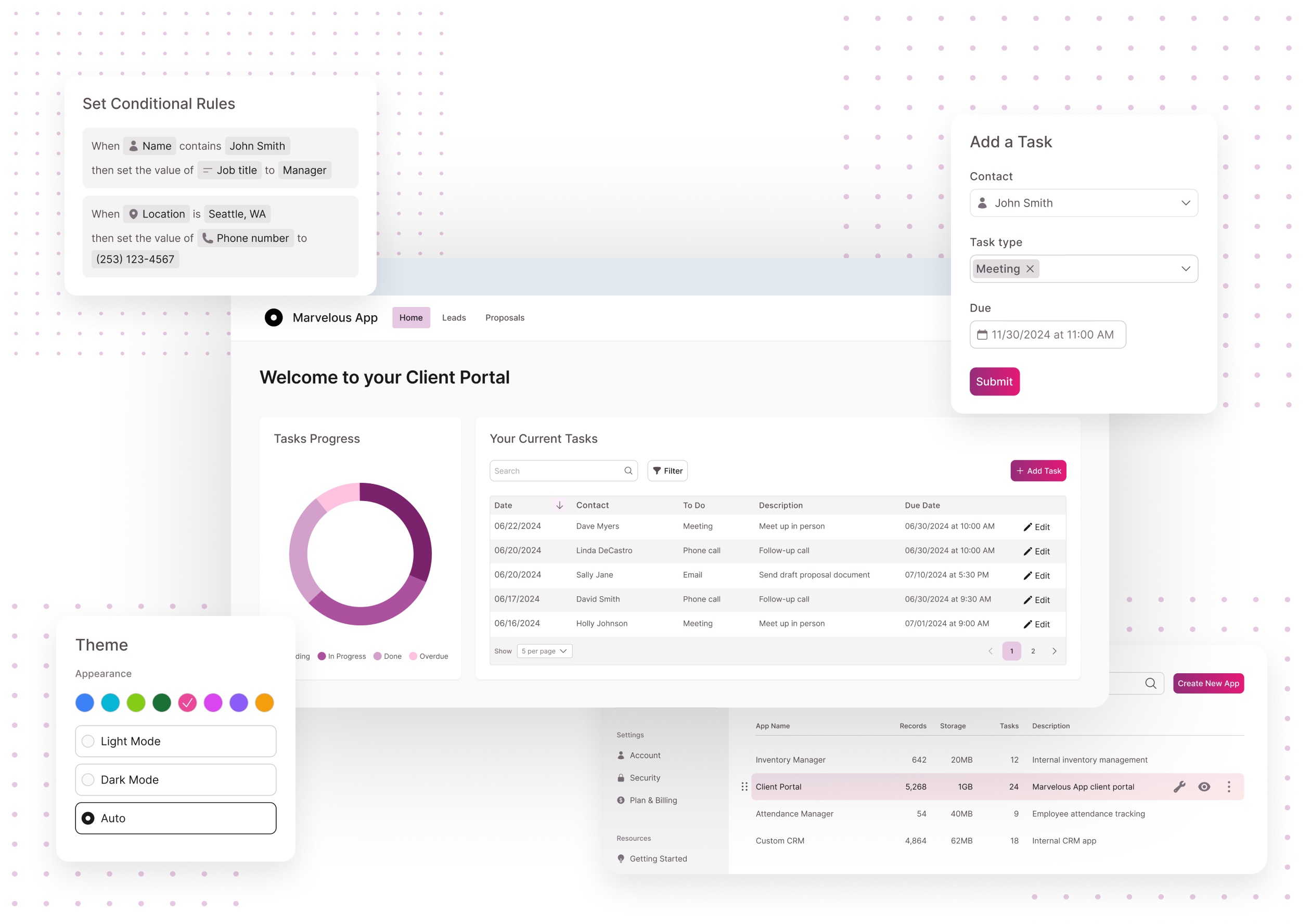No-Code Platforms for Open System Data Source Development: Save Time and Resources
No-Code Platforms for Open System Data Source Development: Save Time and Resources
Blog Article
Checking Out the Benefits of Scalable Databases That Need No Coding Skills for Reliable Data Administration Solutions
The development of scalable data sources that eliminate the necessity for coding skills provides a transformative opportunity for organizations looking for effective data management solutions. By making it possible for non-technical individuals to harness the power of information with intuitive user interfaces, these systems improve ease of access and foster partnership throughout varied teams. In addition, their cost-effectiveness and versatility to evolving organization requirements can substantially improve functional processes. As we take into consideration the ramifications of such innovations, it becomes vital to check out just how they can reshape the landscape of information monitoring and drive sustainable growth in an affordable setting.
Improved Access for Individuals
Improved ease of access for users is a crucial aspect of scalable databases, making certain that data administration systems are straightforward and user-friendly. In an era where data-driven decisions are vital, ease of access allows a bigger series of individuals, consisting of those without extensive technical proficiency, to engage with data source systems properly. This democratization of data accessibility assists in boosted cooperation throughout departments, empowering employees to remove insights and make notified decisions.
Easy to use user interfaces, such as visual information and drag-and-drop functions representation, simplify complicated information interactions. These enhancements lower the understanding curve connected with standard database management, allowing users to concentrate on leveraging data as opposed to grappling with technical complexities. Moreover, scalable data sources frequently incorporate real-time analytics and adjustable dashboards, giving customers with prompt insights customized to their particular demands.

Cost-Effectiveness and Source Financial Savings
Reliable data management not only hinges on accessibility but additionally on cost-effectiveness and source savings. Scalable data sources designed for users without coding skills considerably decrease economic worries typically connected with standard data source administration systems. By removing the demand for specialized programs knowledge, organizations can allocate their sources more efficiently, focusing funds on core organization tasks instead of substantial training or employing experienced employees.
Furthermore, these databases usually utilize cloud-based remedies, which even more lower prices connected to hardware and upkeep. Organizations can scale their database solutions according to their requirements, preventing the expenditures sustained from over-provisioning resources. This flexibility indicates organizations can adapt to altering demands without incurring unnecessary expenses, bring about substantial lasting savings.
In addition, straightforward interfaces enhance data access and administration processes, reducing the moment spent on management jobs. This efficiency converts right into labor price financial savings, permitting teams to focus on critical efforts as opposed to regular maintenance. Overall, adopting scalable databases that need no coding abilities promotes an extra cost-efficient method to data monitoring, allowing companies to optimize their sources while maintaining high levels of functional performance.
Improved Partnership Across Teams

Furthermore, scalable databases facilitate seamless communication amongst employee. With straightforward user interfaces that need no coding skills, workers can conveniently develop, modify, and share records or dashboards customized to their specific requirements. This democratization of information empowers non-technical users to contribute insights, enhancing the collective atmosphere.
In addition, these databases support simultaneous access, permitting several users to function on the exact same dataset at the same time. This function improves efficiency, as teams can take part in joint data analysis without the threat of version control concerns. The capacity to leave notes or comments directly within the data source even more promotes discussion and makes clear information analyses.
Streamlined Information Administration Processes
In today's data-driven environment, companies acknowledge the requirement of structured data monitoring refines to make best use of efficiency and accuracy. By leveraging scalable data sources that require no coding skills, businesses can simplify their data handling and lower the intricacies typically connected with standard database systems. This accessibility encourages non-technical users to involve straight with data, facilitating quicker decision-making and lowering reliance on specialized IT employees.
Structured information management procedures improve process by automating routine jobs such as data entry, recognition, and reporting. Automated information integration ensures that information from find different resources is aggregated seamlessly, getting rid of silos and cultivating a linked view of critical company metrics (no-code). Additionally, user-friendly interfaces allow workers to manipulate information easily, allowing them to generate understandings that drive critical initiatives without the requirement for extensive training.
This performance not just increases operational processes but also lessens the potential for human mistake, making sure that information stays reliable and precise. Inevitably, structured data administration processes via scalable databases lead to improved performance, allowing companies to concentrate on core activities while making sure that their data administration methods are effective and effective.
Scalability for Expanding Services

For expanding business, the capability to scale up or down is important. A scalable database can take care of an increase of information produced from new consumers, items, or services, ensuring that organization procedures continue to be nonstop. In addition, these databases provide the ability to manage peak lots effectively, which is essential throughout periods of rapid development or seasonal spikes.
Additionally, lots of scalable data source options are designed with easy to use interfaces that require no coding abilities, equipping Recommended Site non-technical personnel to manage data successfully (no-code). This democratization of information monitoring permits companies to designate resources tactically and lower dependency on specialized IT workers
Eventually, embracing a scalable data source not just improves operational effectiveness but additionally promotes an environment where companies can progress and innovate without the restrictions of traditional database systems. This versatility placements organizations for long-term success in today's competitive landscape.
Verdict
In final thought, scalable databases that call for no coding abilities provide substantial benefits for efficient data administration. By enhancing information administration processes and supplying scalability for growing organizations, such remedies allow organizations to adapt to altering demands successfully.
Boosted access for users is an important aspect of scalable databases, making sure that information administration systems are instinctive and easy to use.Straightforward interfaces, such as drag-and-drop features and aesthetic information depiction, streamline complicated data communications. In general, adopting scalable databases that call for no coding abilities fosters an extra cost-efficient technique to why not find out more information management, making it possible for companies to maximize their resources while maintaining high degrees of operational efficiency.
By leveraging scalable databases that require no coding skills, businesses can simplify their information handling and reduce the intricacies generally linked with traditional data source systems - no-code.Structured information administration procedures boost workflow by automating regular jobs such as information entry, validation, and reporting
Report this page